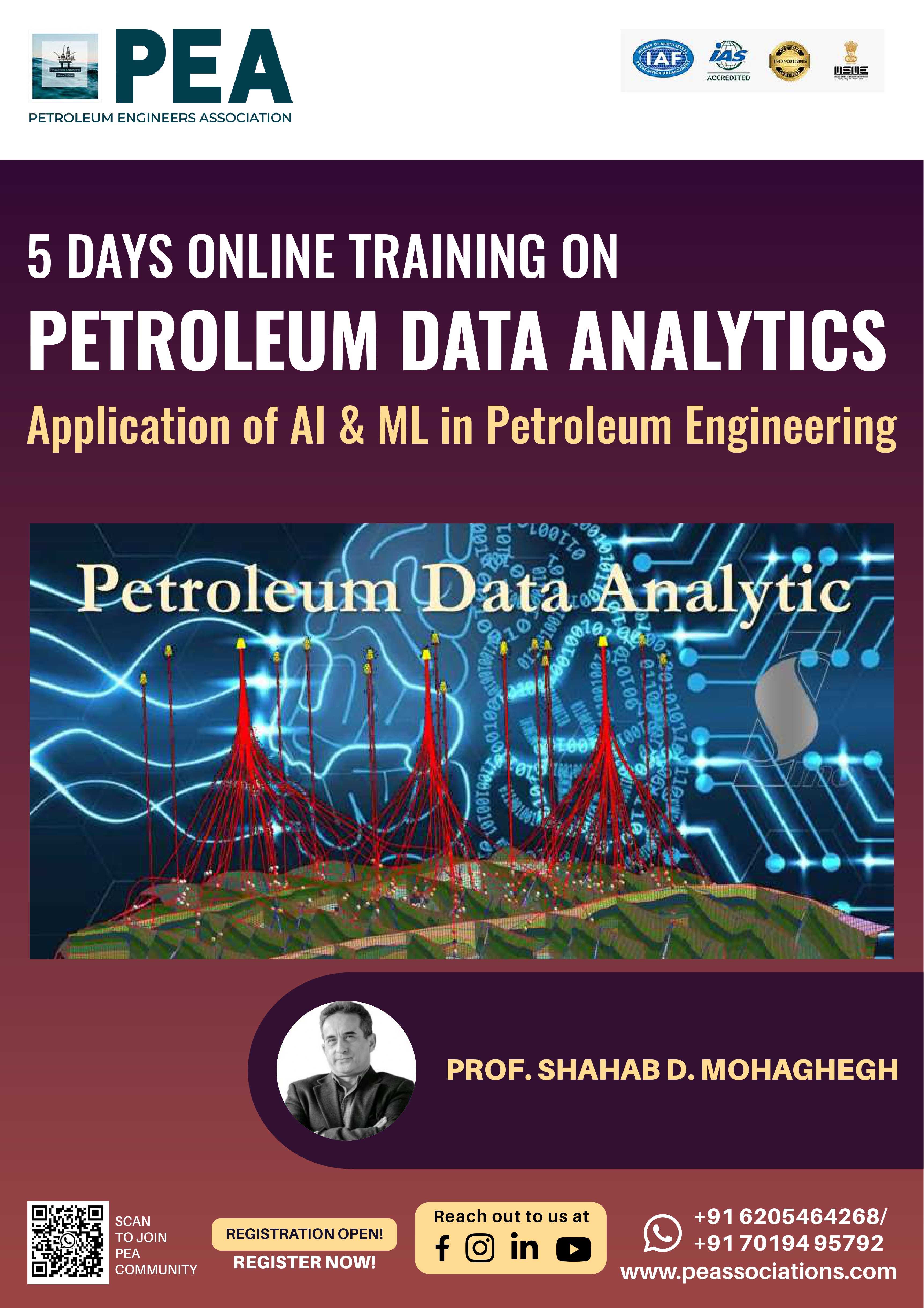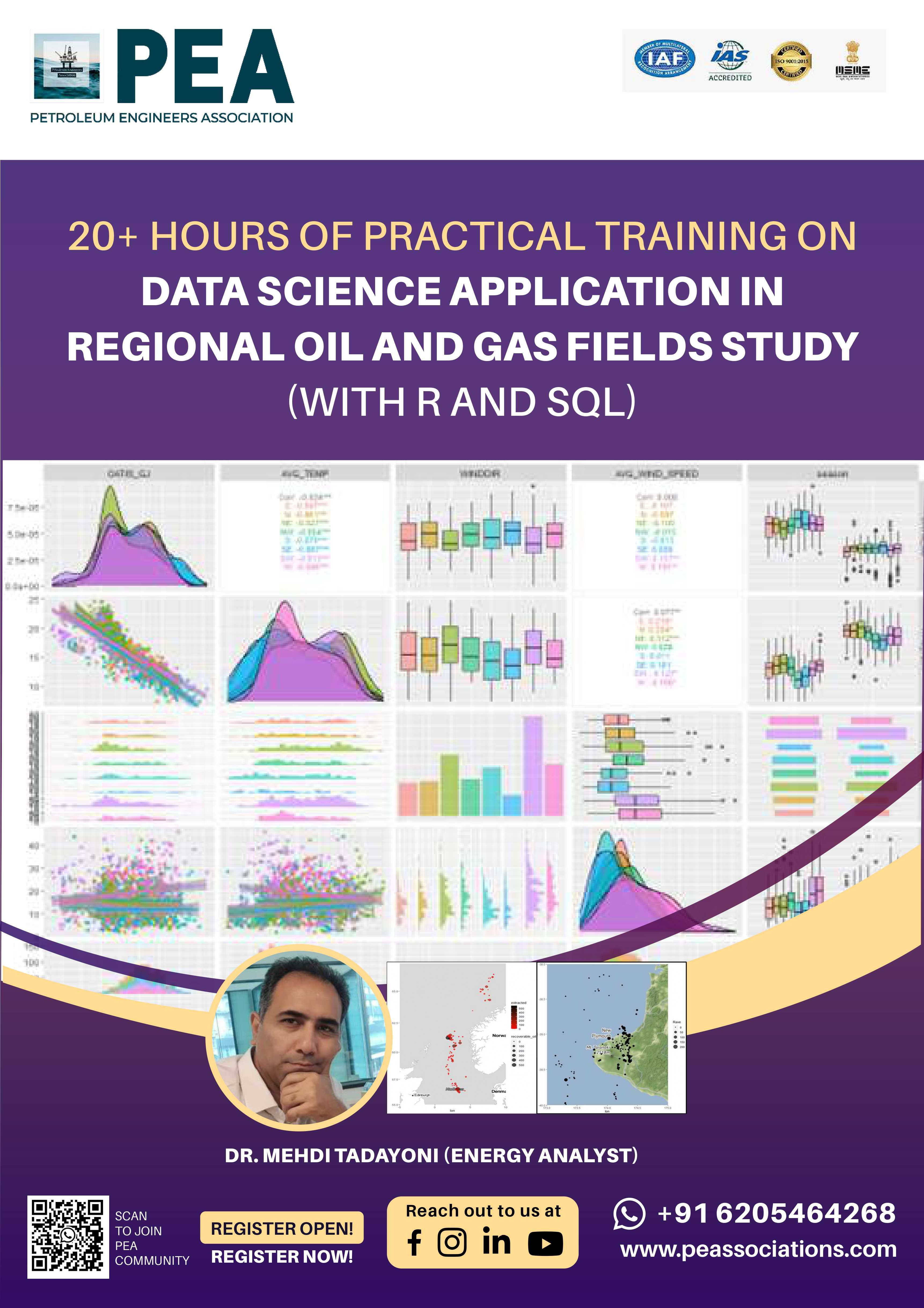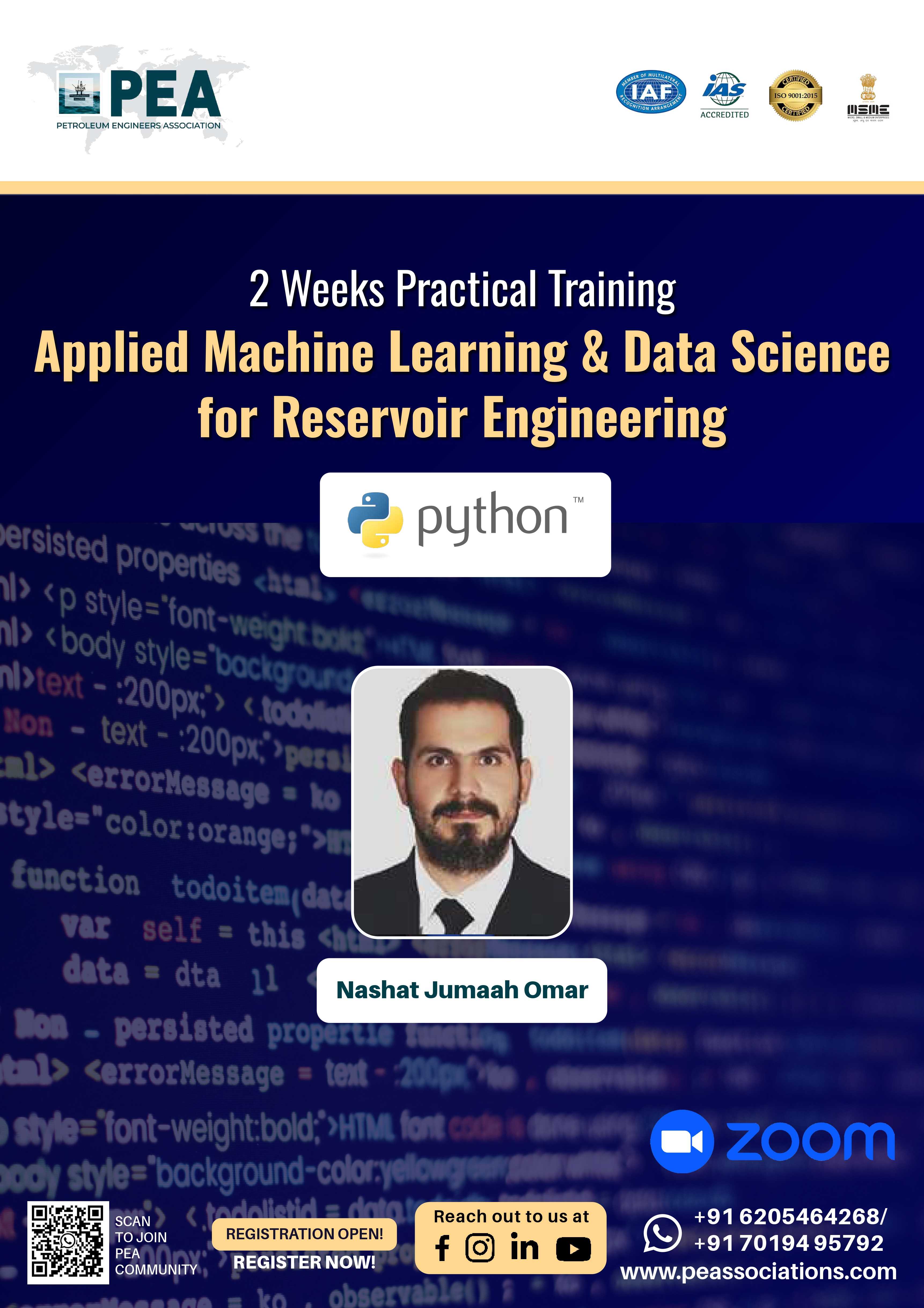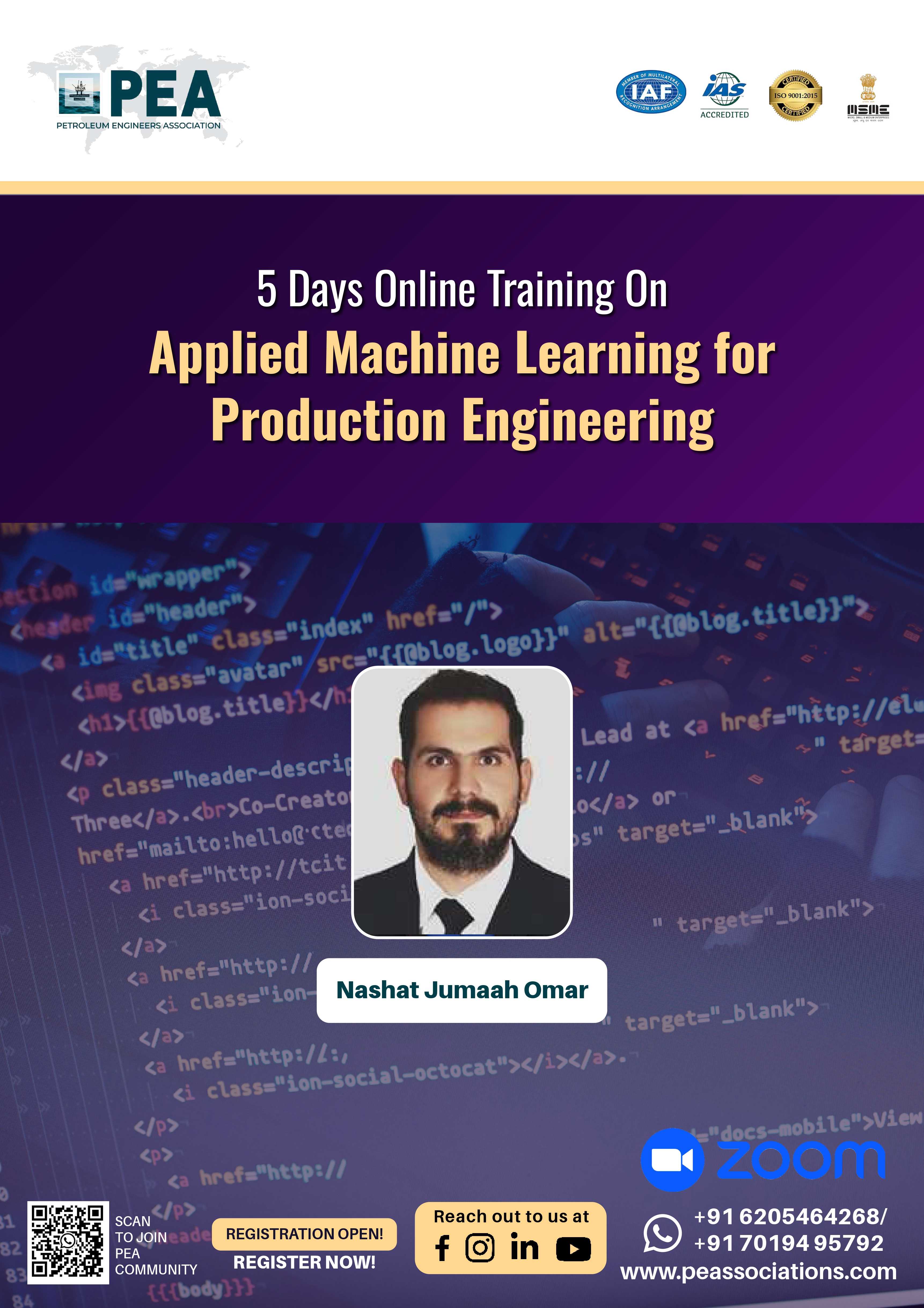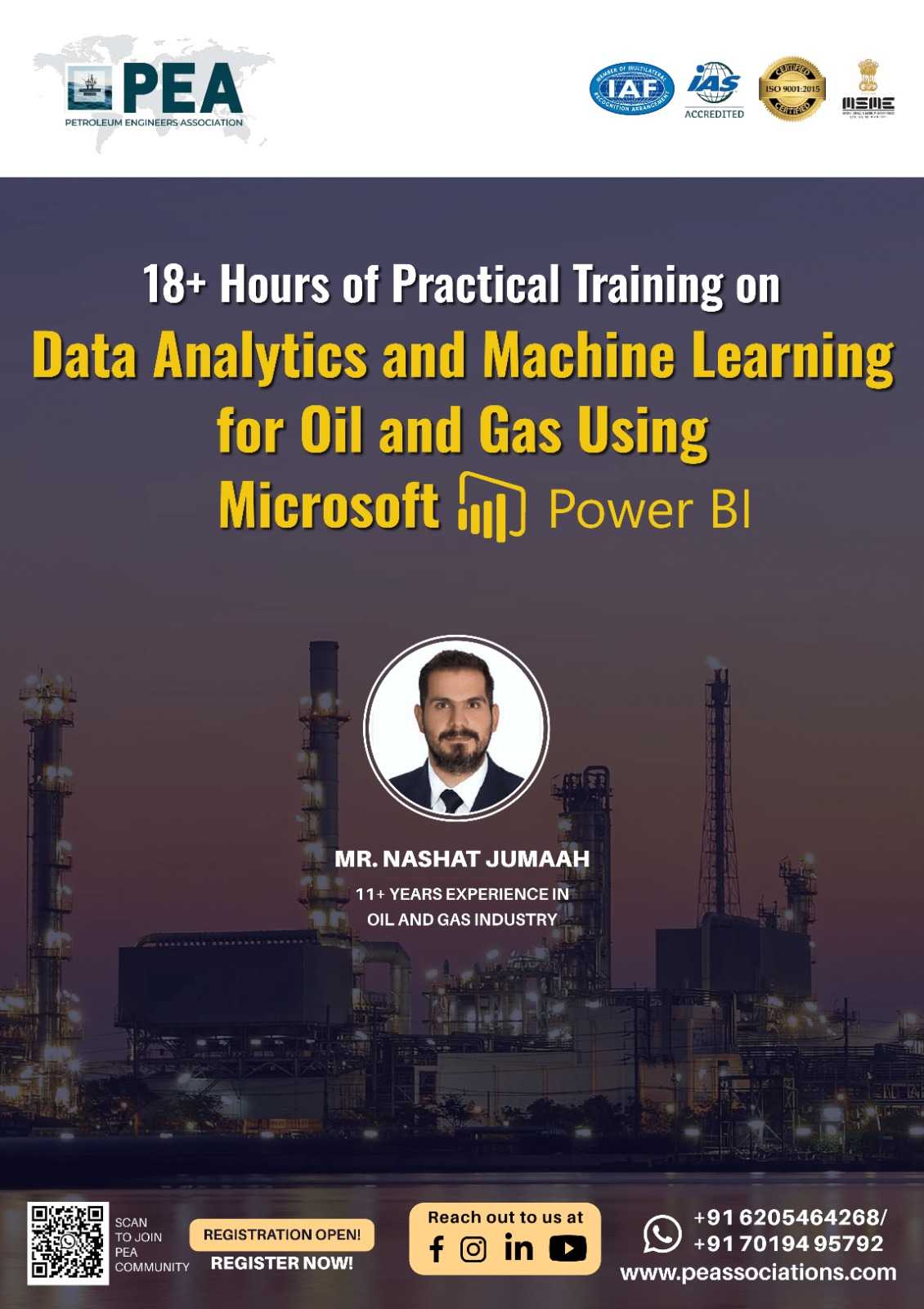Boost your team's skills and your budget! Enjoy group discounts for collaborative learning. Send an inquiry to info@peassociations.com.
Artificial Intelligence Reservoir Simulation & Modeling
Description
The "Artificial Intelligence in Reservoir Simulation & Modeling" course equips participants with the skills to integrate AI techniques into traditional reservoir simulation practices. Covering topics from machine learning applications to advanced data processing, this course provides a hands-on approach to enhancing reservoir modeling accuracy, ultimately leading to improved production strategies and cost efficiencies. Whether you are new to AI or looking to refine your expertise, this course is designed to elevate your technical capabilities and maximize reservoir performance.
Demo Class
As the energy industry advances, artificial intelligence has become a game-changer in optimizing reservoir simulations. This course provides a comprehensive introduction to AI-driven methods that can transform simulation processes. Participants will explore how AI applications can improve decision-making, reduce uncertainty, and increase reservoir productivity.
The course combines lectures, case studies, and hands-on exercises to provide a well-rounded learning experience. Participants will engage with real-world datasets, applying AI techniques to simulate and model reservoir scenarios. This approach ensures that they acquire both theoretical knowledge and practical skills
Organizations can expect enhanced reservoir modeling accuracy and improved forecasting capabilities, leading to more informed decision-making and cost-effective operations. By integrating AI-driven techniques, companies can streamline reservoir analysis processes, optimize production strategies, and stay competitive in the evolving energy landscape.
Participants will gain valuable expertise in applying AI to reservoir simulation, a skill set in high demand across the oil and gas industry. This knowledge will enable them to contribute effectively to advanced reservoir projects, making them valuable assets to their teams and enhancing their career potential.
This course is designed for engineers, geoscientist, and managers. Specifically, those involved with reservoir, completion, and production in operating and service companies. In general, those involved in planning, completion, and operation of hydrocarbon assets are the main target audience.
Day 1: Artificial Intelligence & Machine Learning
·
Brief History of Artificial Intelligence
·
Definitions of Artificial Intelligence and Machine
Learning
·
Science and Engineering Application of Artificial
Intelligence
·
Modeling Physics using Artificial Intelligence
·
Artificial Intelligence versus Traditional Statistics
·
Ethics of Artificial Intelligence (AI-Ethics)
·
Explainable Artificial Intelligence (XAI)
Day 2: Artificial Intelligence & Machine
Learning
Machine Learning Algorithms used for Artificial Intelligence
Artificial Neural Networks
·
Biology of Human Brain
·
Parallel, Distributed Information Processing
·
Mathematics Behind Neural Networks
·
Gradient
Descent
·
Training, Calibration, and Validation
·
Data Handling
·
Different Types of Neural Networks
Fuzzy Set Theory
·
Conventional Set Theory
·
Human Logic vs. Aristotelian Logic
·
Mathematics Behind Fuzzy Logic
Evolutionary Computing
·
Darwinian Evolution Theory (Natural Selection)
·
Genetic Algorithm for Optimization
Day 3: Artificial Intelligence Reservoir Simulation and Modeling
Difference between Traditional Numerical Reservoir Simulation and Top-Down Modeling
Top-Down Modeling (TDM)
·
Components of Top-Down Modeling (TDM)
·
Data QC/QA
Geo-Analytics –
AI-based Geological Modeling
·
Dynamic Conductivity Map
·
AI-based Spatial Distribution of Reservoir Characteristics
·
Spatial Distribution of OOIP
·
Spatial-Temporal Distribution of Remaining Reserves
·
Spatial-Temporal Distribution of Reservoir Pressure
Development of Spatial-Temporal
Database
·
Static and Dynamic Data
·
Resolution in Time
and
Space
·
Role of Offset
Wells
Automated History Matching
·
Training, Calibration, and Validation
·
Testing TDM Forecasting through Blind Validation of the Top-Down
Model (TDM)
·
Optimization of
Machine Learning
Topology
Day 4: Artificial Intelligence Reservoir Simulation and Modeling
Top-Down Modeling (TDM) Production Allocation
Field Development Planning
and Reservoir Management
·
Forecasting Oil
Production, GOR and WC
·
Choke Setting/Well-Head Pressure Optimization
·
Water/Gas Injection Optimization
·
Determination
of Infill Locations
·
Uncertainty Analysis
Day 5: IMagine™
Software Application for TDM
Explanation of the IMagine™ Software Application
Tutorial of IMagine™ Software Application
·
Using an Actual Case Study
·
Data Handling
·
Geo-Analytics
·
Data Importing
·
Reservoir
Delineation
·
Dynamic Mapping
·
Descriptive Analytics
·
Spatio-Temporal Dataset
·
Intelligent Data
Patching
·
Well Biography
·
Key Performance Indicators (KPI)
·
Predictive Analytics
·
Model Development
·
History
Matching
·
TDM Development
·
Prescriptive Analytics
·
Production Forecasting
·
Sensitivity Analysis
· Operations
On successful completion of this training course, PEA Certificate will be awarded to the delegates

Professor Shahab D. Mohaghegh is a pioneer in AI, Machine
Learning, and Data Mining for the oil and gas industry, and serves as a
professor at West Virginia University and CEO of Intelligent Solutions, Inc.
He holds advanced degrees in petroleum and natural gas
engineering, authored three books, over 170 technical papers, and led 60+
industry projects.
A recognized leader, he is an SPE Distinguished Lecturer,
featured author in SPE’s Journal, and founder of the SPE Petroleum Data-Driven
Analytics section.
Honored for his contributions, he played a key role in
post-Deepwater Horizon efforts and advised on U.S. and ISO standards for Carbon
Capture and Unconventional Resources.













